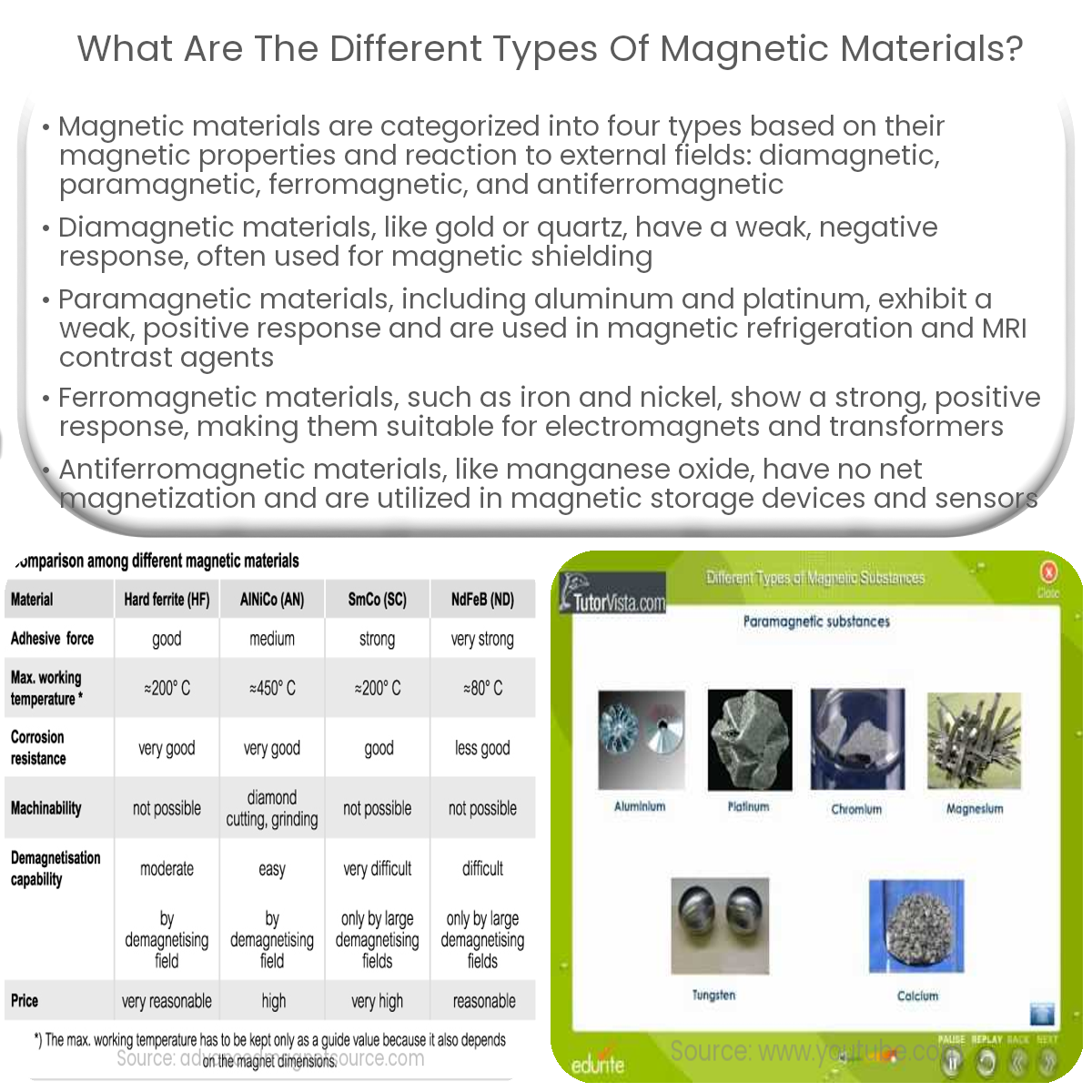Magnetic materials are classified into diamagnetic, paramagnetic, ferromagnetic, and antiferromagnetic based on their response to magnetic fields.
Different Types of Magnetic Materials
Magnetic materials are essential in various applications, from electronics to industrial processes. These materials can be classified into different types based on their magnetic properties and response to external magnetic fields. This article highlights the main types of magnetic materials and their characteristics.
1. Diamagnetic Materials
Diamagnetic materials are characterized by their weak and negative response to an external magnetic field. When placed in a magnetic field, these materials develop an induced magnetic field that opposes the applied field.
- Examples: Bismuth, copper, silver, gold, and quartz.
- Properties: Weak and negative susceptibility, temperature-independent magnetization, and no residual magnetism.
- Applications: Primarily used for magnetic shielding and levitation experiments.
2. Paramagnetic Materials
Paramagnetic materials have a weak and positive response to an external magnetic field. These materials possess unpaired electrons that align with the applied magnetic field, resulting in a slight attraction to the field.
- Examples: Aluminum, platinum, manganese, and some rare earth elements.
- Properties: Weak and positive susceptibility, temperature-dependent magnetization, and no residual magnetism.
- Applications: Used in magnetic refrigeration, low-temperature physics, and as a contrast agent in MRI.
3. Ferromagnetic Materials
Ferromagnetic materials exhibit a strong and positive response to an external magnetic field. These materials have permanent magnetic dipoles that can align with the applied field, resulting in a strong attraction to the field and the ability to retain magnetization even after the field is removed.
- Examples: Iron, nickel, cobalt, and some of their alloys.
- Properties: Strong and positive susceptibility, temperature-dependent magnetization, and residual magnetism.
- Applications: Widely used in electromagnets, transformers, memory devices, and magnetic recording media.
4. Antiferromagnetic Materials
Antiferromagnetic materials have magnetic moments that align in opposite directions, resulting in a net magnetization of zero. These materials do not respond to an external magnetic field at low temperatures but may exhibit paramagnetic behavior at higher temperatures.
- Examples: Manganese oxide, iron oxide, and some rare earth compounds.
- Properties: Temperature-dependent magnetic behavior and no net magnetization.
- Applications: Used in magnetic storage devices, spintronics, and as a component in some magnetic sensors.
In conclusion, magnetic materials can be categorized into diamagnetic, paramagnetic, ferromagnetic, and antiferromagnetic materials based on their magnetic properties and response to external magnetic fields. Understanding these classifications is crucial for selecting the appropriate material for specific applications in electronics, industry, and research.


